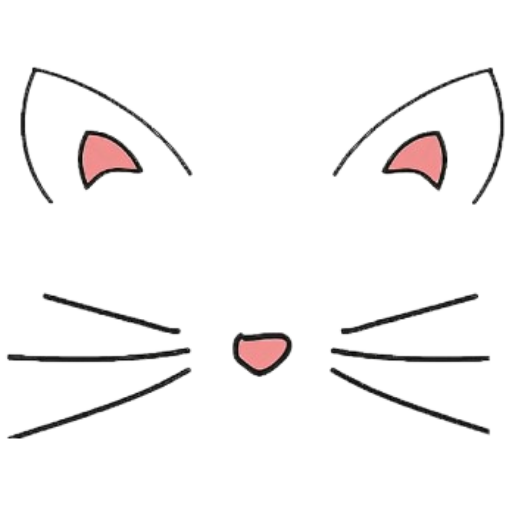Cats in Art and Culture: A Timeless Fascination
- No Comments
From ancient civilizations to modern-day pop culture, cats have captured the imagination and adoration of humans around the world, weaving themselves into the tapestry of art and cultural expression. Their enigmatic presence, graceful demeanor, and independent spirit have inspired a plethora of artistic interpretations and cultural references that continue to evolve.
The earliest known depictions of cats date back to ancient Egypt, where they were revered as symbols of grace and protection. The goddess Bastet, often portrayed with the head of a lioness or domestic cat, was a deity of home, fertility, and childbirth, reflecting the high esteem in which cats were held. Egyptian art is replete with images of cats, often shown sitting regally beside pharaohs or as intricately carved statues.
As trade and exploration expanded, the image of the cat spread across continents, leaving its paw prints in various cultures. In Japan, the Maneki-neko, or “beckoning cat,” is a common talisman believed to bring good luck and fortune to its owner. With its raised paw and friendly demeanor, this iconic figure has become a staple in both homes and businesses, symbolizing prosperity and happiness.
In the realm of literature and folklore, cats have often been cast in roles that highlight their mysterious and magical qualities. From Lewis Carroll’s Cheshire Cat, with its mischievous grin and cryptic advice, to the witches’ familiars of European folklore, cats frequently embody the themes of wisdom and the supernatural. Edgar Allan Poe’s “The Black Cat” explores the darker aspects of this association, delving into themes of guilt and retribution.
Modern art and pop culture continue to pay homage to the feline form. Artists like Pablo Picasso and Andy Warhol have incorporated cats into their works, each capturing the essence of the animal through unique styles and mediums. The internet age has further cemented cats as cultural icons, with viral sensations like Grumpy Cat and Nyan Cat becoming household names. These internet celebrities have spawned a subculture of memes and merchandise, illustrating the enduring appeal of cats in the digital era.
Fashion, too, has embraced the feline influence, with designers drawing inspiration from the sleek lines and patterns of cat fur. Animal prints, particularly leopard and tiger, are perennial favorites on runways, channeling the wild allure and elegance of their feline muses.
The fascination with cats also extends to the realm of cinema and animation. Films like “The Aristocats” and “Puss in Boots” have charmed audiences with their anthropomorphic portrayals of cats, showcasing their charm, wit, and cunning. Animated series such as “Tom and Jerry” and “Garfield” highlight the humorous aspects of feline behavior, endearing cats to viewers of all ages.
In conclusion, the presence of cats in art and culture is a testament to their unique ability to captivate the human imagination. As symbols of mystery, elegance, and even rebellion, they continue to inspire and entertain us across generations. Whether portrayed as mystical beings, comedic characters, or symbols of luck, cats hold a special place in the heart of cultural expression, affirming their status as one of humanity’s most cherished companions.

From ancient civilizations to modern-day pop culture, cats have captured the imagination and adoration of humans around the world, weaving themselves into the tapestry of art and cultural expression. Their enigmatic presence, graceful demeanor, and independent spirit have inspired a plethora of artistic interpretations and cultural references that continue to evolve.
The earliest known depictions of cats date back to ancient Egypt, where they were revered as symbols of grace and protection. The goddess Bastet, often portrayed with the head of a lioness or domestic cat, was a deity of home, fertility, and childbirth, reflecting the high esteem in which cats were held. Egyptian art is replete with images of cats, often shown sitting regally beside pharaohs or as intricately carved statues.
As trade and exploration expanded, the image of the cat spread across continents, leaving its paw prints in various cultures. In Japan, the Maneki-neko, or “beckoning cat,” is a common talisman believed to bring good luck and fortune to its owner. With its raised paw and friendly demeanor, this iconic figure has become a staple in both homes and businesses, symbolizing prosperity and happiness.
In the realm of literature and folklore, cats have often been cast in roles that highlight their mysterious and magical qualities. From Lewis Carroll’s Cheshire Cat, with its mischievous grin and cryptic advice, to the witches’ familiars of European folklore, cats frequently embody the themes of wisdom and the supernatural. Edgar Allan Poe’s “The Black Cat” explores the darker aspects of this association, delving into themes of guilt and retribution.
Modern art and pop culture continue to pay homage to the feline form. Artists like Pablo Picasso and Andy Warhol have incorporated cats into their works, each capturing the essence of the animal through unique styles and mediums. The internet age has further cemented cats as cultural icons, with viral sensations like Grumpy Cat and Nyan Cat becoming household names. These internet celebrities have spawned a subculture of memes and merchandise, illustrating the enduring appeal of cats in the digital era.
Fashion, too, has embraced the feline influence, with designers drawing inspiration from the sleek lines and patterns of cat fur. Animal prints, particularly leopard and tiger, are perennial favorites on runways, channeling the wild allure and elegance of their feline muses.
The fascination with cats also extends to the realm of cinema and animation. Films like “The Aristocats” and “Puss in Boots” have charmed audiences with their anthropomorphic portrayals of cats, showcasing their charm, wit, and cunning. Animated series such as “Tom and Jerry” and “Garfield” highlight the humorous aspects of feline behavior, endearing cats to viewers of all ages.
In conclusion, the presence of cats in art and culture is a testament to their unique ability to captivate the human imagination. As symbols of mystery, elegance, and even rebellion, they continue to inspire and entertain us across generations. Whether portrayed as mystical beings, comedic characters, or symbols of luck, cats hold a special place in the heart of cultural expression, affirming their status as one of humanity’s most cherished companions.


